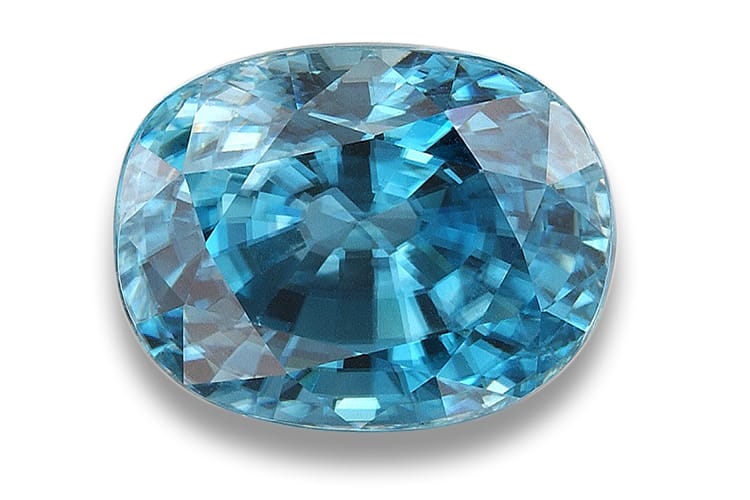How to Estimate Gem Weight

Although you can’t weigh a gemstone in a jewelry setting, you can get a close approximation of the gem weight by determining its volume. When using this approach, you must take careful measurements and observations. The weight you’ll calculate must be adjusted by the stone’s proportions. Making those judgements takes a trained eye. The alternative, removing and resetting the stone, is rarely worthwhile.
Step 1: Measure Your Gem
- Measure the gem carefully in every direction.
- Record all your measurements as well as the stone’s shape. Take special note of its proportions.
- Finally, look up the specific gravity(SG) for the stone you’re examining in our specific gravity chart.
Step 2: Formulas for Estimating Faceted Gem Weight
Apply the proper formula for the gem based on its cut. The following formulas assume you’re dealing with well-proportioned gems with a medium/thin girdle. If that’s not the case, you’ll have to adjust your results. See Step 4 below.
For all cuts except rounds and rectangular cushions, calculate the diameter as the average of the diagonal, length, and width.
Weight estimates are in carats.
Round
Diameter ✕ diameter ✕ depth ✕ SG ✕ 0.0018
Oval
Diameter ✕ diameter ✕ depth ✕ SG ✕ 0.0020
Square
Diameter ✕ diameter ✕ depth ✕ SG ✕ 0.0024
Square Cushion
Diameter ✕ diameter ✕ depth ✕ SG ✕ 0.0018
Square Step Cut
Diameter ✕ diameter ✕ depth ✕ SG ✕ 0.0023
Square with Cut Corners
Diameter ✕ diameter ✕ depth ✕ SG ✕ 0.0024
Rectangle
Length ✕ width ✕ depth ✕ SG ✕ 0.0026
Rectangle Step Cut
Length ✕ width ✕ depth ✕ SG ✕ 0.0025
Rectangle with Cut Corners
Length ✕ width ✕ depth ✕ SG ✕ 0.0026
Rectangular Cushion
Diameter ✕ diameter ✕ depth ✕ SG ✕ 0.0022 (NOTE: diameter = average of length and width)
Pear
Length ✕ width ✕ depth ✕ SG ✕ 0.0018
Heart
Length ✕ width ✕ depth ✕ SG ✕ 0.0021
Marquise
Length ✕ width ✕ depth ✕ SG ✕ 0.0017
Triangle
Length ✕ width ✕ depth ✕ SG ✕ 0.0018
Step 3: Formulas for Estimating Cabochon Gem Weight
Flat-bottomed cabs actually range from 0.0023 to 0.0029. Those with a bottom bulge range from 0.0024 to 0.0030. As a general rule, use the following formulas:
High-Domed Cabs
Length ✕ width ✕ depth ✕ SG ✕ 0.0026
Low-Domed Cabs
Length ✕ width ✕ depth ✕ SG ✕ 0.0029
Step 4: Adjusting Your Gem Weight Estimate
If the stone you’re examining isn’t well-proportioned or has a very thin or thick girdle, adjust your gem weight estimate as follows:
Girdle
Use an average of the girdle thickness. Don’t base your reading on a bulge at the top of a heart or the point of a gem.
- Thin girdle, subtract 1% to 2%.
- Slightly thick, add 1% to 2%.
- Thick, add 3% to 4%.
- Very thick, add 5% to 6%.
- Extra thick, add 7% to 10%.
Pavilion Bulge
- Slight, add 3% to 5%.
- Noticeable, add 6% to 8%.
- Obvious, add 9% to 12%.
- Extreme, add 13% to 18%.
A long culet due to steep pavilion angles can add up to 5%.
Shape Outline
- Wide corners on cut corner squares and rectangles can decrease weight as much as 5%.
- For oval, pear, marquise, and heart cuts, wide wings or high shoulders can add up to 10%. Occasionally, straight shoulders will require a deduction of 1% to 5%.
- Marquise and (sometimes) pears will have a very short keel or none at all. This will reduce the weight by 1% to 3%.
- Triangles with straight sides will require a reduction of up to 10%.
Source: International Gem Society, www.gemsociety.org